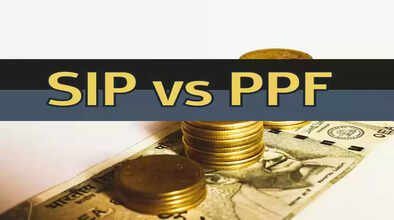EPF vs SIP: Don't rely on EPF for your old age, you'll always be in need of money; consider this option..

EPF vs. SIP: Every employed person indeed worries about their retirement. Even if they don't have a job after retirement, their expenses remain the same. In such a situation, would it be wise to leave their old age to the mercy of EPF? Will the money they receive from EPF be sufficient? The answer is no. So what should they do? Let's explain how you can prepare for your old age while still working.
What is EPF?
First, understand what EPF is. It's a retirement investment plan run by the Employees' Provident Fund Organization (EPFO). Every month, an employee contributes to their EPF account. They can contribute a maximum of 12 percent of their basic salary and dearness allowance (DA). Employers are also required to contribute an equal amount to the employee's EPF account. The employer is required to contribute a minimum of ₹1,800, while the maximum contribution is 12 percent of the employee's basic salary and DA.
Of the 12 percent, 8.33 percent goes to the EPF, while the remaining 3.67 percent goes to the Employees' Pension Fund (EPS), which provides a monthly pension after retirement.
The EPFO provides an annual compound interest rate of 8.25 percent to employees. Employees can also exceed the 12 percent contribution limit. However, the excess amount will be credited to the Voluntary Provident Fund (VPF). The advantage of investing in EPF is that up to ₹1.50 lakh per financial year is tax-exempt under Section 80C of the Income Tax Act, 1961.
Interest earned on deposits and the maturity amount are also tax-free. EPF is classified as an exempt-exempt-exempt (EEE) category. In VPF, you are only eligible for tax exemption up to 12 percent of your basic salary and DA contributions. Returns on contributions above this amount are taxable. Because this scheme offers significant tax benefits, many experts recommend investing up to the maximum limit of 12 percent.
What is a SIP?
Anyone can invest in mutual funds through daily, monthly, quarterly, or annual SIPs. They invest a predetermined amount in each investment cycle.
However, the SIP amount can also be increased every year. Such SIPs are called top-up SIPs. SIPs offer investors rupee-cost averaging, where the net asset value (NAV) fluctuates with market rises and falls.
When the market is high, fewer SIPs are purchased, but the value of their investments increases. When the market is low, more NAVs are purchased, but the value of their investments decreases. Another advantage is that SIP investments offer compounded growth, where the value of their investments can grow exponentially over time.
Investors who cannot invest a large sum at once and want to invest smaller amounts each investment cycle prefer SIPs over lump-sum investments.
EPS vs. SIP: How to Reach a Goal of Rs. 1.50 Crore Faster
Before comparing the two investment options, we need to keep in mind that EPF is a guaranteed return plan where returns are earned in the form of interest, while SIP is a market-linked program where returns can be higher than EPF, but the investment can be negative if the market falls.
Because we don't know the exact returns a SIP will yield, we'll assume a standard 12 percent return. In EPF, if you start contributing at age 25 and continue until retirement age of 60, you'll have 35 years of investment. If you earn 8.25 percent annual interest and want to have a corpus of ₹1.50 crore by the age of 60, your monthly investment amount should be ₹6,350.
After 35 years, your maturity amount will be ₹1,50,29,133.18. In a SIP, if you start investing ₹6,350 monthly at the age of 25 and earn a 12 percent return on your investment, you can have a retirement corpus of ₹1.50 crore in 27 years. In 27 years, your invested amount will be ₹20,57,400, long-term capital gains will be ₹1,34,15,875, while the expected amount will be ₹1,54,73,275.
Disclaimer: This content has been sourced and edited from News 18 hindi. While we have made modifications for clarity and presentation, the original content belongs to its respective authors and website. We do not claim ownership of the content.

